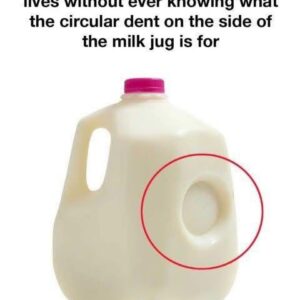CHICAGO — They were stored in Bowie, then sent on a flight late Thursday night, after the MLB trade deadline had passed, not arriving at the team hotel until after 2 a.m. because they had to detour through Milwaukee, then drive to Chicago. A music festival had clogged up the flights.
When they arrived Friday, they needed Orioles brand gear from the storage area and to introduce themselves to their new teammates. Some, including Jeremiah Jackson, had to get ready for their MLB debut.
They are the replacement players, the ones who, in the interim at least, are with the Orioles to fill their roster after the team traded nine players before Thursday’s deadline.
“Obviously the last 48 hours have been quite the whirlwind,” said Terrin Vavra, one of those players sent to meet the team in Chicago.
There were six new faces in the clubhouse Friday morning. Will any be on the major league roster next year? Perhaps one or two. But, as the team’s goal has switched from making the playoffs to getting to .500 to now just surviving the rest of the season, the Orioles need bodies.
So how did a team coming off back-to-back playoff appearances with three former No. 1 prospects, the runner-up in American League Rookie of the Year voting last year and an All-Star closer fall this far?
The first signs of trouble came last winter. Corbin Burnes was probably never coming back to Baltimore. The Orioles made an effort, offering him a four-year, $180 million deal that had a higher average annual value than the six-year, $210 million contract he signed to stay home in Arizona.
That, by itself, should not have been a problem. There were other top-of-the-rotation starters who signed last offseason for close to what the Orioles were willing to pay Burnes. But, instead of securing an ace, general manager Mike Elias signed a pair of back-end arms — Charlie Morton, a veteran innings eater, and Tomoyuki Sugano, a 35-year-old MLB rookie from Japan.
Elias’ plan was clear. The Orioles were going with quantity over quality, crossing their fingers that Grayson Rodriguez, who had not yet made it through a full major league season, and Zach Eflin, who dealt with shoulder issues and back inflammation in 2024, would fill the void left by Burnes.
“We’ve put ourselves in a really good position to continue to play toward the top of our division. … We’re really excited about where the team’s at, where the organization’s at, where the franchise is at,” Elias said on the first day of spring training. “I think we’re going to have a great season.”
On a Wednesday in early March, Elias’ plan started to crack. Rodriguez came out of his second spring training start feeling “sluggish.” He needed a cortisone shot in his elbow and would miss opening day but would need only a week to 10 days to recover, the Orioles said. It’s been four months, his lat has become a problem in addition to his elbow, and they do not know what’s causing the issue and when, or if, he will be able to pitch this season. Surgery is now a possibility.
One key piece was down.
Others would follow in quick succession as March rolled into April and 13 players ended up on the injured list. Andrew Kittredge, a right-handed reliever signed in the offseason, needed knee surgery and would be out for two months. Colton Cowser, during the first series of the season in Toronto, fractured his thumb. Jordan Westburg, Tyler O’Neill, Gary Sánchez and Eflin wound up sidelined as well.
It became demoralizing, players said, to know their potential but to have so many key contributors unable to play. There wasn’t one in particular who stood out, lefty reliever Keegan Akin said recently. It was the sheer magnitude they were dealing with.
“We weren’t winning like we wanted to win,” Akin said. “It’s usually not a good thing when you are leading the league in injuries.”
Without top contributors, those left in the lineup began to crumble. The team seemingly reached rock bottom with a 24-2 loss to the Reds, the Orioles’ worst defeat in 18 years. That night, the players told each other to forget about it and move on, they could bounce back the next day. That’s not easy, starting pitcher Cade Povich said, but the players thought, if they said it out loud, they would start to believe it.
“That day was tough, obviously,” Povich said. “Never expect something like that to happen.”
The hits kept coming in May. A five-day losing streak was followed a few days later with a three-game sweep by the Twins.
Morale dipped. There was a team meeting in which manager Brandon Hyde tried to fire up his players, followed by a players-only one. Neither worked.
A third meeting, led by Elias, was the most drastic. On May 17, Hyde and bullpen coach and catching instructor Tim Cossins were fired. Tony Mansolino, the third-base coach since the 2021 season, took over in the interim. The Orioles were 15-28 at the time.

The team has played to a winning record with Mansolino in charge, going 36-32. The pitching has improved — with Morton rediscovering his curveball and Trevor Rogers coming up from Norfolk and becoming their best starter — and the Orioles have most of their core healthy.
It was too late to make an impact.
At the start of June, the veterans gathered their teammates. The players who knew they had a chance of being traded, such as Ryan O’Hearn, told the clubhouse they wanted to stay in Baltimore. But to do that the whole team would need to play better.
It was the first time, Povich said, that being sellers at the deadline seemed like a realistic possibility.
“I think we always had the thought that it would turn around and it wouldn’t get to that point, but it unfortunately did,” he said.
Still, at the end of June, Elias was noncommittal about their approach at the deadline, at least publicly holding out hope they could make a run before the end of July and get closer to contention.
On July 10, before a doubleheader against the Mets, Elias made his first move, sending Bryan Baker to the Rays for the 37th overall pick in the 2025 draft.
“You guys don’t want to hear it, but there’s still time, and despite making a move this morning,” Mansolino said that day. “And I’m sure our obituary was probably getting written somewhere this morning because we made a trade.”
No, that wasn’t their death notice. But that was the moment players figured out the front office was ready to give up on the season.
“When Baker went, it was like, ‘OK, I think we’re going to start getting rid of some of these guys,’” Akin said.
Going 5-7, including a four-game losing streak in which they were outscored 32-5, was the final nail. Elias made his intentions obvious July 25 when he traded Gregory Soto to the Mets.
Days later, in the middle of a doubleheader against the Blue Jays, Orioles officials scurried around in the bowels of Camden Yards, making a trade with the team in the clubhouse on the other side. Soon, Seranthony Domínguez was packing his stuff and walking down the hallway to his new team.
On Wednesday, the Orioles took the field for the last time before Thursday’s deadline. O’Hearn hit a home run, and Cedric Mullins robbed one. They sat together in the clubhouse after the game. They hadn’t been told anything by the front office, but they knew their time together was ending.
Westburg and other players made sure to say goodbye to O’Hearn, who was not flying with the team to Chicago, on Wednesday night before they left Baltimore. They had a feeling they would not see their friend in Chicago.
That night, Ramón Urías and Kittredge got on the team plane to Chicago. Within 30 minutes of arriving at the team hotel, they were packing their bags again. Kittredge, traded to the Cubs, had only to switch hotels. Urías had to get to Boston to meet the Astros. They at least got to say goodbye to their teammates in person.
On Thursday, as the 6 p.m. deadline approached, players, both those on the market and not, were glued to their phones. With a day off, they were finding out about trades on social media, the same way the rest of the world does.
By midafternoon, Mullins, a longtime staple in center field, had been moved to the Mets. Adley Rutschman had given hugs to most of the potential trade pieces just in case, but not Mullins. Mullins traveled with the team to Chicago; it was not as obvious to him that he would be moved.
An hour later, it was O’Hearn, with Ramón Laureano, traded to the Padres.
Thirty minutes before the deadline, Morton’s deal to the Tigers was done.
“To see them go is disappointing,” Westburg said in Chicago. “I could talk about that all day.”
Friday morning, as the Orioles got ready to play the Cubs, Mansolino gathered his coaches. He told them they had 24 hours to be sad and angry.
“I’m sad because Ramón Urías and Ryan O’Hearn and those guys that you build these tight bonds with [are gone], but I’m also really happy for them,” Mansolino said. “As I talked to these guys on the phone, they understand that I’m going to miss them and I’m thrilled that they’re going to great places with a chance to win a World Series.”
Now past the 24-hour mourning period, they have to figure out how to tackle the rest of the season. Although the top six guys in the lineup — soon to be seven when Ryan Mountcastle returns from injury this week — are largely the same, six of the eight relievers were not here at the start of the season. Two, Elvin Rodríguez and Houston Roth, have never pitched in front of Orioles coaches. Mansolino said his pitching coaches will have to “coach their butts off” to make the bullpen even a little bit viable.
“We don’t know yet, we’ll be honest with you,” Mansolino said on how they’re going to do that.
There will be a lot of that moving forward. Perhaps a prospect or two, such as Samuel Basallo and Dylan Beavers, will make their debuts, injecting excitement into what will surely be a wasted last two months of the season.
Then they can turn their sights to 2026, a fresh start after a flop of a season.




